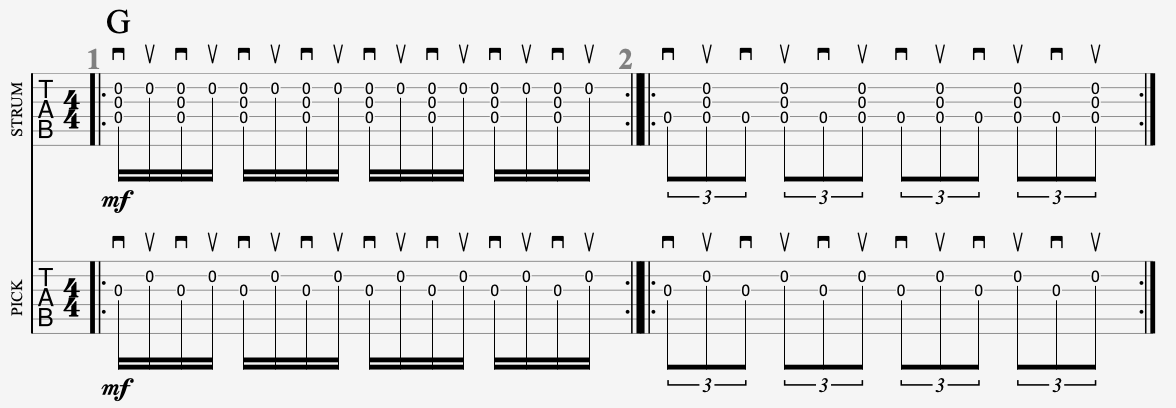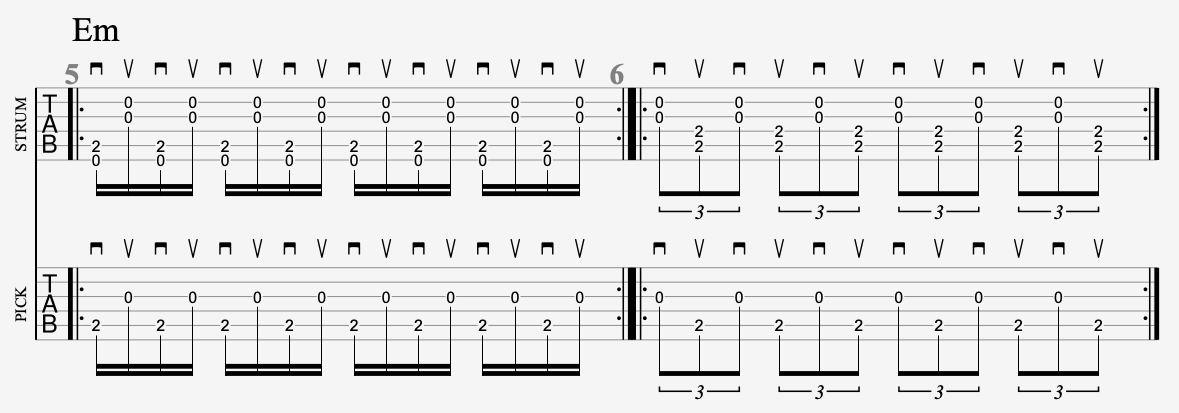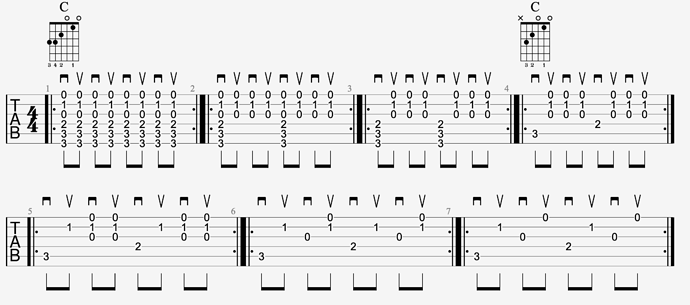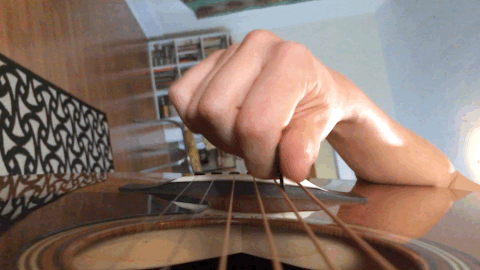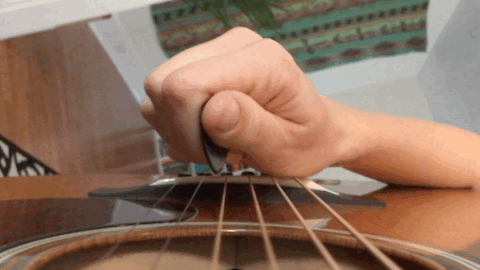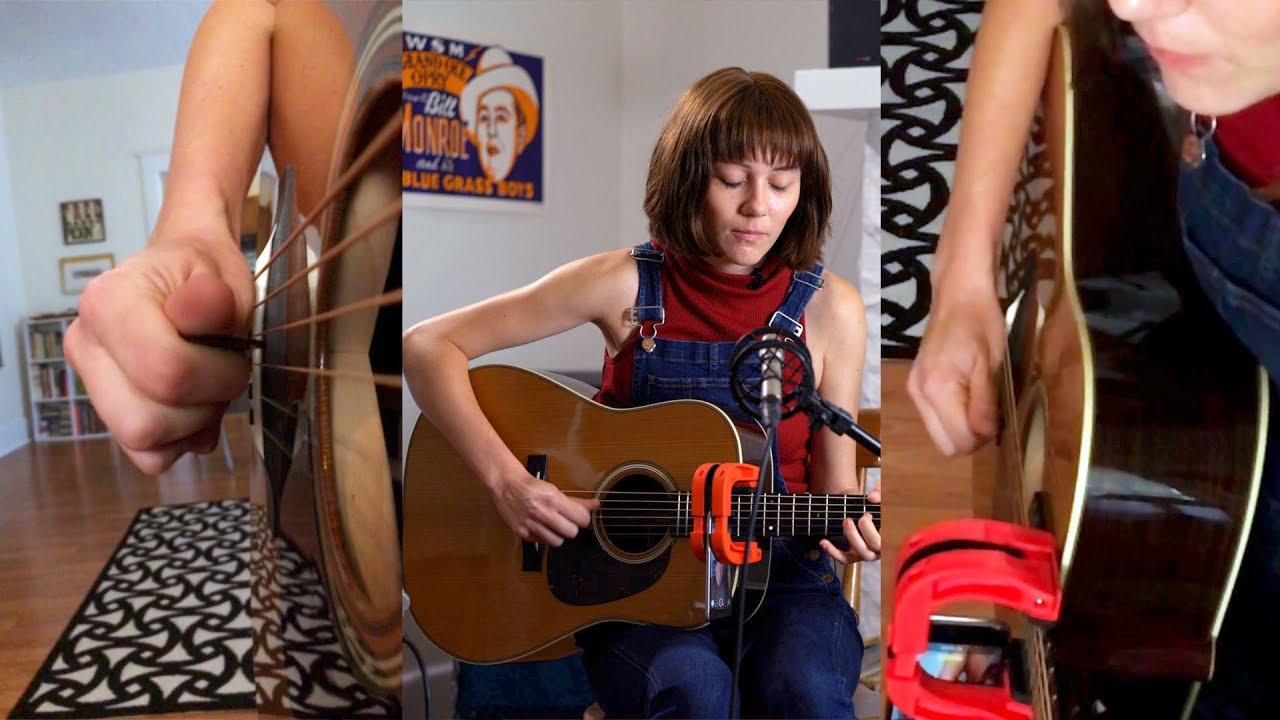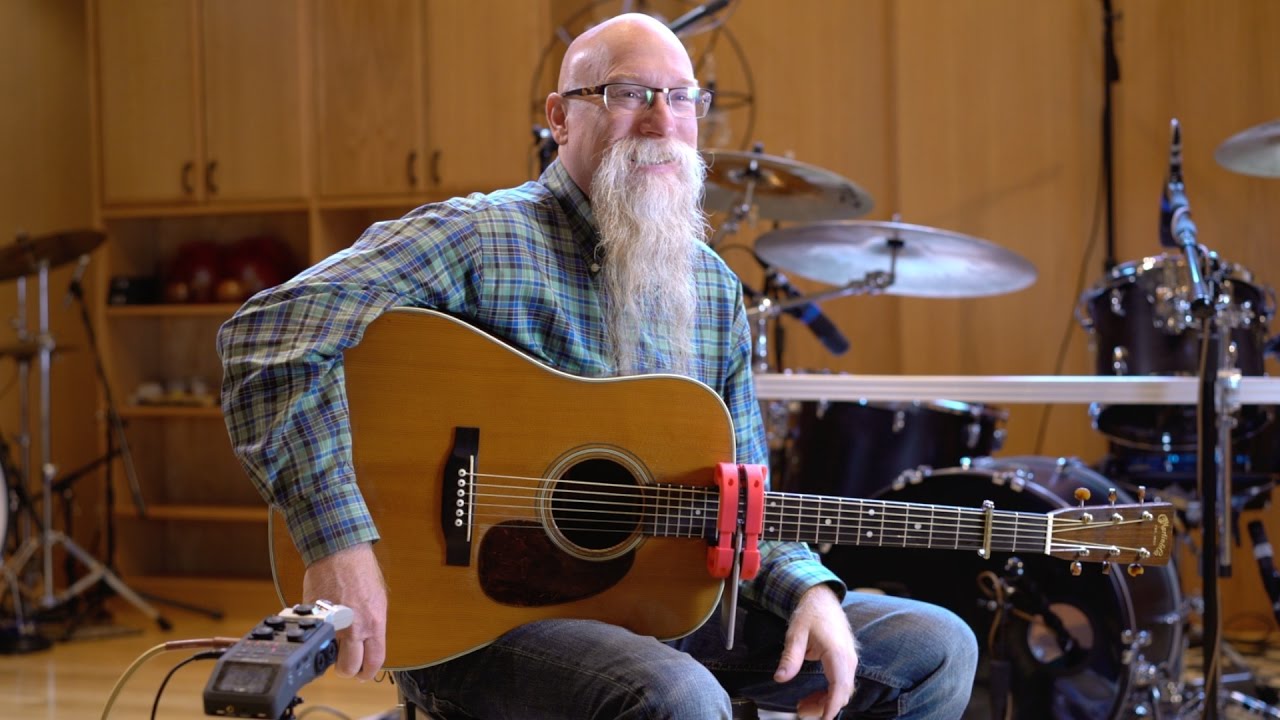Disclaimer:
A little rabbit hole led me here, and I’m not actually asking about how to improve at performing any of these figures, nor am I asking about whether or not practicing them is useful…and adding to that, this question itself may not be at all useful to anybody. So, I hope this doesn’t come off the wrong way, but if the response is “this is a waste of time/not useful” then, yes, I already know that is extremely likely but sometimes my rabbit holes wind up being fruitful.
That being said…
What do you all think about the techniques required to play the ‘top line’ of these examples (marked ‘strum’) in comparison to the ‘bottom’ line (marked ‘pick’) shown?
Keep in mind anything marked with multiple strings can, for discussion purposes, be roughly 2-3 strings, it doesn’t have to be an exact hit of that exact quantity of strings. Anything marked as a single string would have to be exactly that string.
EDIT: Realized after posting I can post images directly inline.
#2 “Middle pluck” vs fours roll
#3 “Skips”, inside and outside
I have thoughts about them but keeping post length down to start, seeing if anybody has any input or observations from trying these.

